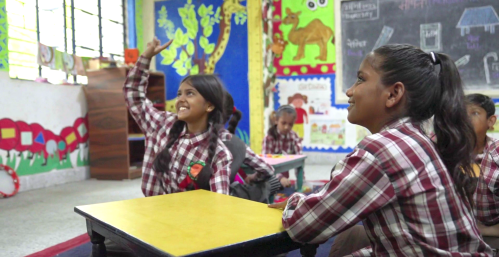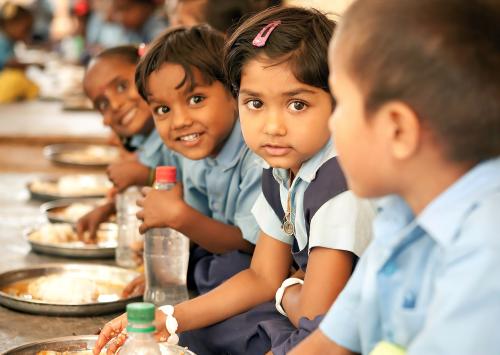While 2022 saw a return to pre-pandemic normalcy in many regards, the economic and social upheavals around the world due to the pandemic continue to reverberate. The ongoing Russian invasion of Ukraine, as well other political crises and environmental shocks, have only exacerbated these effects. The IMF estimates that global growth will be just 3.2 percent in 2022, down from 6 percent in 2021. Over the past year at Brookings, we have continued to track innovative funding mechanisms–global impact bonds–and have published research and participated in events on the topic around the globe. Additionally, our research this past year has continued to focus on data for achieving outcomes in education and early childhood development. Below, we summarize the highlights from the impact bonds market and our work this past year and take a look forward to 2023.
The impact bonds market
As of January 1, 2023, our Brookings database shows there are 239 social and development income bonds in 39 countries around the world that meet our definition of an impact bond. This includes 27 in low- and middle-income countries (LMICs). Overall, we continue to see that impact bonds in social welfare (76) and employment (69) lead the field, while the majority of impact bonds in LMICs are in the employment (8), education (7), and health (8) sectors (Figure 1).
Figure 1.
We have also found that the average number of beneficiaries served by impact bonds has increased significantly over the past year. At the start of 2022, the average was 11,893. Our January 1, 2023 snapshot shows that the average increased by nearly 7,000 people to 18,642 (Figure 2). As successful initiatives scale up and new projects expand beyond limited pilot formats, we expect this number to continue to rise.
Figure 2.
Source: Brookings Global Impact Bonds Database, January 2023
There were significant developments within the education sector in impact bonds. Indeed, we found that education was the fastest growing impact bond sector, with 12 new impact bonds implemented in 2022 alone. In September, the Education Outcomes Fund (EOF) launched the Sierra Leone Education Innovation Challenge, an $18 million program supporting 325 public primary schools over three years to improve literacy and numeracy for approximately 130,000 children. The five projects within this outcomes fund are partnerships between impact investor Bridges Outcomes Partnership, and providers EducAid, Save the Children, Rising Academy Network, National Youth Awareness Forum, and Street Child. The outcome payers include the government of Sierra Leone; the Foreign, Commonwealth & Development Office of the United Kingdom; Korea International Cooperation Agency; Bank of America; and Hempel Foundation.
On the margins of the U.N. General Assembly, we hosted a discussion on the future of outcomes-based financing (OBF). This event, focusing on how OBF can improve children’s lives, also featured the international launch of the EOF Sierra Leone program and results from two of the largest impact bonds in the world that completed in 2022 The first impact bond, the Quality Education India Development Impact Bond (QEI DIB), focused on improving the core competencies of literacy and numeracy for 200,000 Indian students, while the Utkrisht Development Impact Bond aimed to improve maternal and newborn health in Rajasthan, India. As the knowledge partner for the QEI DIB, we interviewed stakeholders from the project to determine key takeaways and lessons learned over the course of the project, culminating in the “From evidence to scale: Lessons learned from the Quality Education India Development Impact Bond” report. This report highlighted how a focus on outcomes impacted every stakeholder in the project, from the top down to individual service providers.
This was one of several in-person events that we engaged in this year as the world began to open up. Notably, OBF was prominent in many of the global conversations addressing the multiple crises reverberating across the globe. In April, we held our first hybrid event at Brookings, featuring the results from the recently concluded Village Enterprise Development Impact Bond, which targeted first-time entrepreneurs living in extreme poverty in Kenya and Uganda aiming to increase consumption levels and assets. The speakers shared that partnership strengthening and the centering of the end-user experience were some of the key benefits of the impact bond financing structure, which were similar points to those highlighted by the stakeholders of the QEI and Utkrisht DIBs.
With the pandemic’s exacerbation of the global learning crisis, some of the most important organizations in education and early childhood development sectors emphasized the need for innovative solutions to increase both the volume and effectiveness of funding. In fact, major education sector fora have dedicated full days to exploring a variety of innovative financing mechanisms focused on expanding and enhancing domestic and donor spending on education, including outcomes-based contracts. Financing was also featured at the Annual Meeting of the Global Schools Forum, a member organization bringing together non-state providers from around the globe. We had the pleasure of engaging in a fascinating debate on financing and service delivery partnerships with Pankaj Jain who shared the experience of Gyan Shala, the service provider in the QEI DIB, and Harry Patrinos of the World Bank who spoke on his seminal research on public-private partnerships. Additionally, at the UNESCO World Conference on Early Childhood Care and Education in Tashkent in November, we co-hosted a session on financing and partnerships with EOF, UNICEF, and the Global Partnership for Education in which impact bonds and outcomes funds were an important part of the conversation. In summary, spanning all these events, as well as the numerous online events in which we participated, there is more momentum than ever to identify creative solutions such as OBF to outcome achievement for children and vulnerable populations around the world.
Work on data for outcomes
In addition to our research and convening around the broader OBF market, we dedicated time this past year to digging into some deeper sub-branches on the topic. One in particular encompasses the data needed to understand if outcomes are being achieved before it is too late to achieve the goals of the program or project. In November, we launched our “Digital tools for real-time data collection in education” report highlighting the importance of real-time data to track progress and inform course adjustments in education. In the report, we provide a framework to analyze these tools, looking at specific factors like tool usability, functions, and context to help education decisionmakers select or create fit-for-purpose tools. In conjunction with the report, we launched an interactive database of existing digital tools for real-time education data being used in low- and middle-income countries which, through crowdsourcing, we will continue to populate on a quarterly basis (so let us know if you have a tool that we should include).
Additionally, over the past year, we have continued our work on cost data for education and early childhood development, another critical piece of OBF. Our Childhood Cost Calculator (C3) was piloted in three countries, with the aim to provide a user-friendly, online tool that can help answer a host of questions related to costing. Through exercises in Cambodia, Ghana, and Honduras, we saw how C3 can provide useful cost data and analysis across multiple education sectors. This includes, but is not limited to, cost feasibility analysis, cost comparisons of different interventions, cost distributions across categories or resource types, and scale-up costs. As more programs complete costing with the C3, a database of education and early childhood development costs will be created, informing future developments in the field. In September, we co-hosted a webinar with the World Bank, International Labor Organization, UNICEF, and ECDAN on costing for early learning and ECD programs. The webinar introduced three resources for costing and explored how each tool can be used effectively.
What’s next?
We are looking forward to 2023, which is shaping up to be a promising year. The pipeline of projects, while having slowed during the pandemic, has grown rapidly in the past year and we are likely to see the launch of a number of impact bond projects before the end of 2023. Among LMIC countries, based on our Brookings database and the Outcome Accelerator’s Pipeline Database, the dominant sectors of projects in the pipeline are education and employment initiatives, and we are observing the growth of less common intervention areas such as energy and water, sanitation, and hygiene (WASH) and anticipating projects in new countries such as Vietnam, Namibia, and Lebanon. A notable rising trend is the use of outcomes funds bringing together a multitude of projects as stakeholders seek to achieve greater scale. For example, EOF, following their recent launch in Sierra Leone, will launch in Ghana this month. The $30 million program, supported by the government of Ghana and the World Bank, will aim to reach approximately 175,000 children by helping to assimilate out-of-school children back into the classroom and improve learning outcomes through assistance to teachers in 600 primary schools around the nation. Furthermore, with the development of several local and global initiatives aimed at expanding OBF this past year, we expect to see the fruits of these efforts in 2023. For example, globally, we hope to see growth of projects and research with the launch of the Outcomes Accelerator, which brings together disparate stakeholders with a goal of realizing the Sustainable Development Goals through increased and effective use of OBF.
As for us, over the next year, in addition to following the global market and diving deeper into particular projects, we will continue exploring what is needed to engage in OBF effectively and efficiently. Keep an eye out for further research on data for outcomes including real-time and cost data and the launch of the C3.
As always, please stay in touch. We’d love to hear about your work as well as share the insights from our research. Wishing you all a fruitful and joyful 2023!
The Brookings Institution is committed to quality, independence, and impact.
We are supported by a diverse array of funders. In line with our values and policies, each Brookings publication represents the sole views of its author(s).










Commentary
A review of outcomes-based financing in 2022 and beyond
January 9, 2023